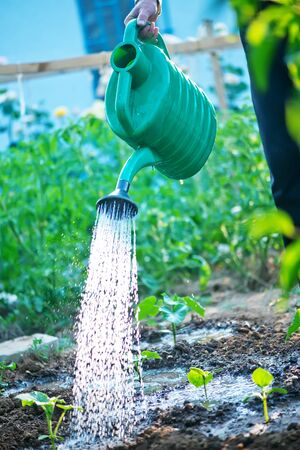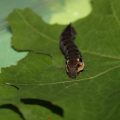Introduction to Natural Garden Sprays
Across the UK, gardeners are embracing homemade natural sprays as a practical and sustainable way to keep pests at bay. With growing awareness of environmental issues and the potential health risks linked to chemical pesticides, many are choosing eco-friendly solutions for their allotments, patios, and flower beds. Natural garden sprays use everyday kitchen ingredients like garlic, soap, or chilli, making them both budget-friendly and accessible for beginners and seasoned gardeners alike. Unlike harsh chemicals, these DIY alternatives help protect pollinators such as bees and butterflies, support soil health, and reduce the risk of contaminating local water sources. As more people value greener lifestyles and wildlife-friendly spaces, the shift towards natural garden sprays is not just a trend but a conscious movement in British gardening culture.
2. Essential Ingredients for DIY Sprays in the UK
Creating your own natural garden sprays is both rewarding and practical, especially when you use ingredients readily available in British homes and gardens. The UK’s climate supports a variety of herbs and plants that are ideal for crafting effective pest deterrents. Below, we explore some of the most popular, locally sourced ingredients and household staples perfect for making your own sprays.
Herbs Commonly Found in British Gardens
| Herb | Pest Targeted | How to Use |
|---|---|---|
| Mint | Aphids, ants | Infuse leaves in water, strain, and spray on affected plants |
| Rosemary | Cabbage moths, beetles | Boil sprigs in water, cool, and apply as a foliar spray |
| Lavender | Moths, whiteflies | Mash flowers and steep in water; use as a mild repellent spray |
| Sage | Cabbage worms, carrot flies | Brew strong sage tea and mist onto crops vulnerable to these pests |
| Basil | Whiteflies, mosquitoes | Crush leaves and soak in water; filter before spraying on plants |
Household Items for Natural Sprays
| Item | Main Benefit | Application Tips |
|---|---|---|
| Washing-up Liquid (Eco-Friendly) | Suffocates soft-bodied pests like aphids and mites | Add a few drops to water; avoid harsh detergents to protect plants and wildlife |
| Baking Soda (Bicarbonate of Soda) | Prevents fungal diseases such as powdery mildew | Dissolve one teaspoon per litre of water and spray lightly on leaves |
| White Vinegar (Distilled Malt Vinegar) | Repels slugs and acts as a mild weed killer around paths (not for direct use on crops) | Dilute with water before application; target only unwanted weeds or slug trails near beds |
| Garlic Cloves (British grown if possible) | Naturally deters a wide range of insects including aphids and caterpillars | Mince garlic, steep in hot water overnight, strain and spray liberally on plants’ foliage |
| Chilli Flakes or Powder (Mild British varieties work well) | Keeps away sap-sucking bugs like thrips and spider mites | Add to warm water with a drop of washing-up liquid; strain before spraying |
Sourcing Locally for Sustainability
The best part about making DIY sprays is that most ingredients can be found in your own garden or at your local greengrocer’s. Choose British-grown produce where possible to support local farmers and reduce your environmental footprint. By using what you already have at home, you not only keep your garden free from harsh chemicals but also help preserve the unique biodiversity found across UK gardens.
Tip:
If you’re new to homemade remedies, start simple with one or two ingredients before experimenting with combinations. Always test a small patch of your plant first to ensure no adverse reactions occur.
![]()
3. Simple Recipes for Popular Garden Sprays
If you want to keep your UK garden flourishing without harsh chemicals, these homemade sprays are your go-to solution. Here are step-by-step recipes using easy-to-find ingredients, perfect for tackling common British pests.
Homemade Garlic Spray for Aphids and Mites
What You’ll Need:
- 2 bulbs of garlic
- 1 litre of water
- 1 tablespoon mild liquid soap (eco-friendly washing-up liquid works well)
Steps:
- Crush the garlic bulbs and steep them in 1 litre of water overnight.
- Strain the mixture to remove solids.
- Add 1 tablespoon of liquid soap and mix gently.
- Pour into a spray bottle and apply generously to affected plants, focusing on leaf undersides.
Tip:
Use this spray every few days during aphid season, especially on roses and beans commonly grown in UK gardens.
Chilli & Soap Spray for Slugs and Caterpillars
What You’ll Need:
- 2 fresh chillies or 1 teaspoon chilli powder
- 1 litre of water
- 1 teaspoon mild liquid soap
Steps:
- Chop chillies (wear gloves) and simmer them in water for 10 minutes. Let cool.
- Strain the mixture and add liquid soap.
- Pour into a spray bottle. Mist around plant bases and leaves where slugs or caterpillars are present.
Caution:
Avoid spraying on windy days and always test on a small area first, as strong chilli can irritate skin and sensitive plants.
Baking Soda Spray for Fungal Problems (e.g., Powdery Mildew)
What You’ll Need:
- 1 tablespoon baking soda (bicarbonate of soda)
- 1 litre of water
- ½ teaspoon mild liquid soap
Steps:
- Dissolve baking soda in water, then add the soap and stir gently.
- Fill a spray bottle and mist onto leaves showing signs of mildew or fungal growth.
Best For:
This gentle solution is ideal for courgettes, cucumbers, and gooseberries—plants often troubled by mildew in damp UK summers.
With these easy DIY recipes, you can confidently protect your garden using natural ingredients found right at home. They’re safe for pollinators, pets, and children, making them a perfect fit for eco-conscious British gardeners.
4. Best Practices for Application in British Gardens
Getting the most from your DIY natural garden sprays in the UK means understanding not just what to spray, but also when and how. The UK’s climate, with its unpredictable rain, cooler temperatures, and distinct growing seasons, calls for a tailored approach. Here are some practical tips to ensure your homemade solutions work effectively and safely.
Timing Is Key: When to Apply Sprays
Applying natural sprays at the right time maximises their effectiveness and minimises potential harm to beneficial insects or plants. Below is a table with seasonal guidance for British gardens:
| Season | Best Time to Spray | Key Considerations |
|---|---|---|
| Spring | Early morning or late afternoon on dry days | Pests begin emerging; avoid spraying during blossom to protect pollinators. |
| Summer | Early evening, after heat of the day | Monitor for pest outbreaks; avoid spraying before forecasted rain. |
| Autumn | Mild, dry days when pests are still active | Treat late infestations; prepare perennials for winter. |
| Winter | Rarely needed unless indoors/greenhouse | Pest activity is low outdoors; focus on cleaning tools and pots. |
How to Apply Sprays for Maximum Effectiveness
- Avoid Wet Weather: Rain can wash away natural sprays, reducing their efficacy. Always check the forecast and choose a dry spell if possible.
- Target Affected Areas: Focus on the undersides of leaves and stems where pests hide. Use a fine mist for even coverage without over-saturating.
- Repeat as Needed: Natural sprays often require multiple applications. Reapply every 7-10 days or after heavy rainfall.
- Test Before Widespread Use: Try your spray on a small section first to check for any adverse effects on plants.
- Avoid Sunny Midday Hours: Spraying during strong sunlight can cause leaf scorch or quick evaporation of the solution.
Caring for Wildlife and Pollinators
The UK garden is home to many helpful creatures. Apply sprays early or late in the day when bees are less active. Choose plant-friendly ingredients and never spray open blooms.
A Few Final Tips for UK Gardeners
- Keep a Record: Note down what you used, where, and when. This helps you track what works best each season.
- Store Safely: Keep leftover solutions in clearly labelled bottles out of reach of children and pets.
- Stay Observant: Regularly inspect your plants for signs of both pests and beneficial insects so you can adjust your approach accordingly.
By following these best practices, you’ll help your DIY natural garden sprays deliver great results—protecting your plants while respecting the unique rhythms of British gardens.
5. Garden Safe Tips: Protecting Bees and Wildlife
When making and using natural garden sprays in the UK, it’s important to protect bees, butterflies, hedgehogs, and other local wildlife that are essential for a healthy garden ecosystem. Here’s how you can ensure your pest control is both effective and environmentally friendly.
Choose Ingredients Carefully
Stick to gentle ingredients like mild soap, garlic, or neem oil. Avoid harsh chemicals—even natural ones like strong vinegar or excessive essential oils can harm pollinators. Always double-check that every ingredient is safe for beneficial insects common in British gardens.
Spray at the Right Time
Apply your DIY sprays early in the morning or at dusk when bees and pollinators are less active. This reduces direct contact and keeps vital insect populations healthy.
Target Only Problem Areas
Rather than spraying all your plants, focus on affected leaves or areas. Spot treatment helps limit exposure for non-target creatures and preserves the balance of your garden’s mini-ecosystem.
Avoid Spraying Flower Blooms
Flowers attract pollinators like bees and hoverflies. Always spray stems and undersides of leaves instead of blooms to avoid harming these helpful visitors.
Create Wildlife-Friendly Zones
Leave some corners of your garden pesticide-free as safe havens for insects, birds, and small mammals such as hedgehogs. Plant native wildflowers, provide water sources, and let some leaf litter remain—these simple steps support biodiversity while keeping pests in check naturally.
Monitor Results Responsibly
Keep an eye on your garden after using any spray. If you notice fewer bees or ladybirds, reassess your approach. Adjust recipes or frequency as needed to strike a healthy balance between pest control and wildlife protection.
6. Troubleshooting & Common Mistakes
Even the best DIY natural sprays can sometimes fall short or cause unexpected issues, especially in the unique climate and conditions of UK gardens. Here’s how to troubleshoot when things don’t go as planned and avoid common mistakes British gardeners often face.
What To Do If Your Sprays Aren’t Working
Check Your Ingredients
Make sure you’re using fresh, high-quality ingredients. Old garlic, expired soap, or diluted oils can lose their effectiveness. Stick to organic and unprocessed options whenever possible for better results.
Mind The Weather
The UK is known for its unpredictable weather. Rain can quickly wash away your spray, so always apply it during a dry spell and preferably early in the morning or late afternoon to avoid scorching your plants on sunnier days.
Be Consistent
Natural sprays need regular application—usually every 7–10 days or after heavy rain. Skipping treatments will allow pests to return. Set reminders if needed to keep up with your routine.
Avoiding Typical Pitfalls
Don’t Overdo It
Applying too much spray can damage delicate leaves, especially on young seedlings. Test your mixture on a small area first and watch for any signs of leaf burn before treating the whole plant.
Target The Right Pests
Identify which pests are actually causing trouble. Not all bugs are bad—many insects, like ladybirds and lacewings, help control pests naturally. Only treat areas where you see genuine damage or infestations.
Rotate Your Recipes
Pests can build resistance over time. Try alternating between different sprays (such as garlic one week, neem oil the next) to keep them guessing and protect your garden’s ecosystem.
Extra Tips For UK Gardeners
- Always label your spray bottles clearly to avoid confusion in the shed.
- Store homemade sprays in a cool, dark place—sunlight can degrade natural ingredients quickly.
- If you use water from the tap, let it stand overnight before mixing; this helps chlorine dissipate and makes the solution gentler for your plants.
Remember:
Natural pest control is about balance, not elimination. By observing your garden closely and making small adjustments as you go, you’ll find what works best for your local conditions and keep your plants healthy without harsh chemicals.


